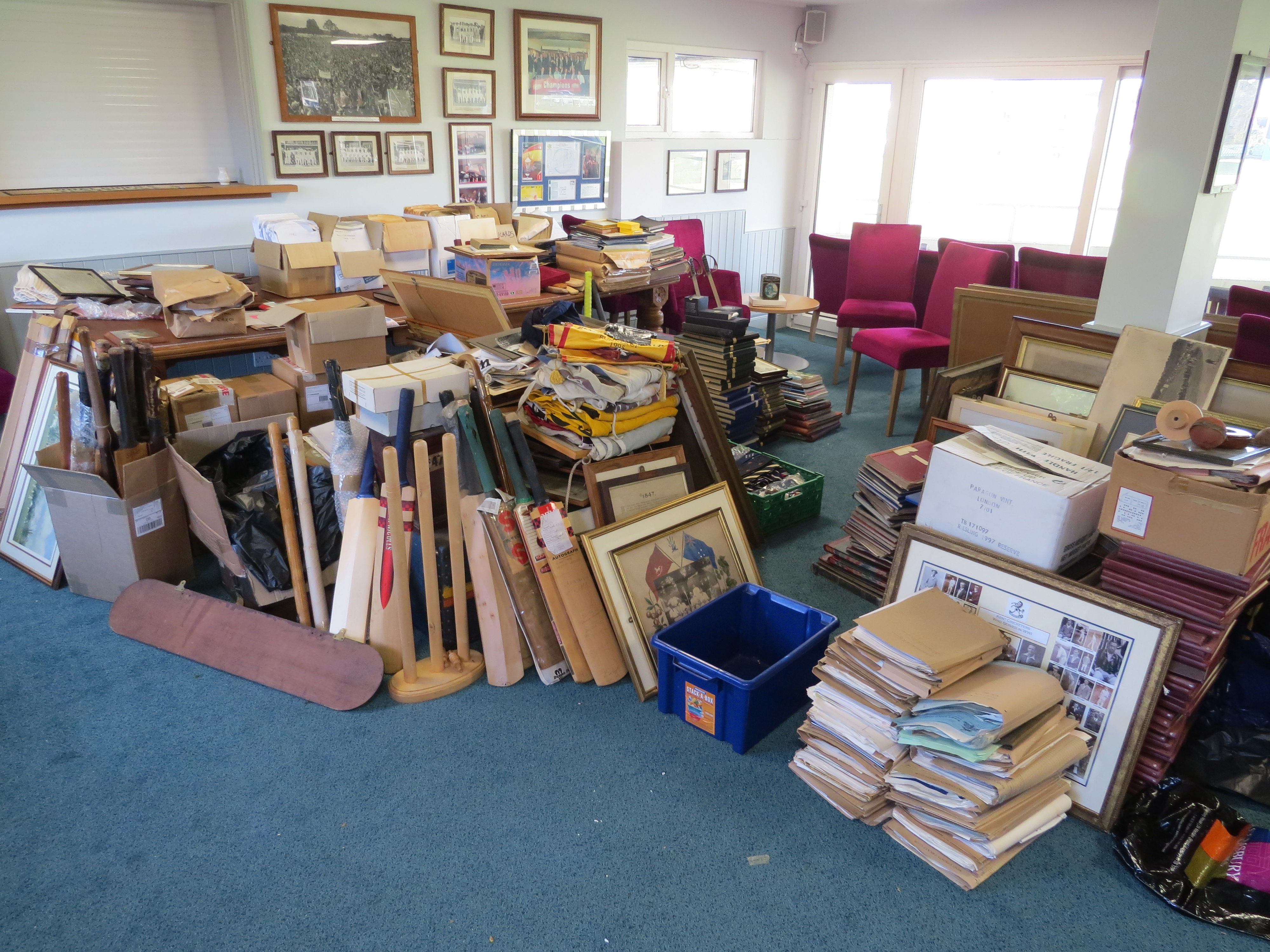 As we break for Christmas and the New Year holiday, the Committee Room at the Spitfire Ground is still acting as temporary storage for a great deal of cricketing memorabilia which has been nestling undisturbed at the top of the Woolley Stand for many years. I am very pleased to report that work has begun on transforming the topmost nooks and crannies into safe storage for these items, but at least we have had a chance to look at these things in the daylight.
As we break for Christmas and the New Year holiday, the Committee Room at the Spitfire Ground is still acting as temporary storage for a great deal of cricketing memorabilia which has been nestling undisturbed at the top of the Woolley Stand for many years. I am very pleased to report that work has begun on transforming the topmost nooks and crannies into safe storage for these items, but at least we have had a chance to look at these things in the daylight.
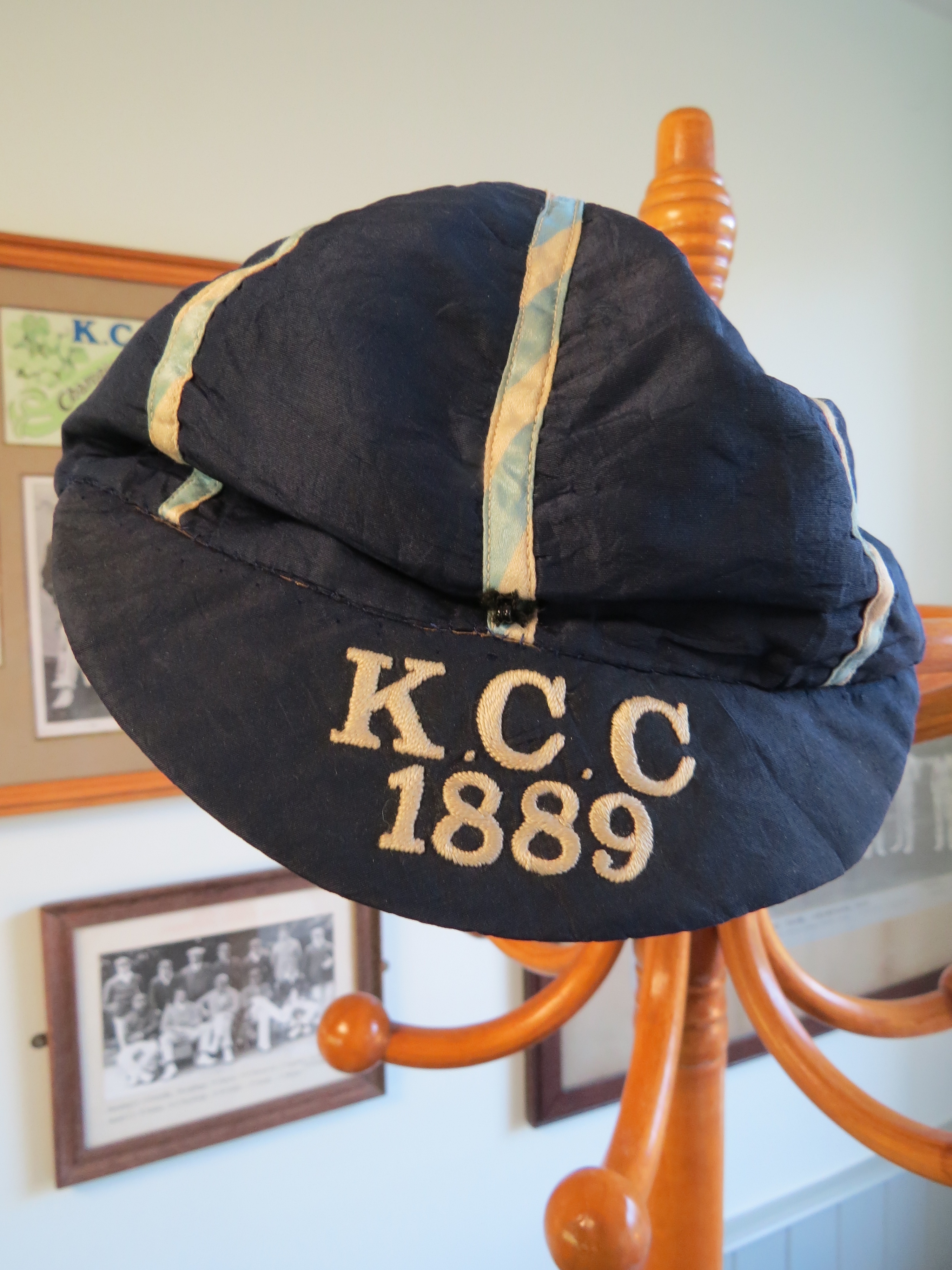
Some items are mysterious. This cap, bearing the legend “K.C.C. 1889” is of unknown provenance. If it were a Kent County Cricket Club cap (and there are no contemporary pictures or other evidence of players wearing a similar one), then it would be K.C.C.C. rather than merely K.C.C. Having dismissed that idea, we noticed the light blue and white stripes on the cap, and wondered whether it could refer to King’s College, Cambridge. But we drew a blank there too. Then we had to consider any other Kent-based cricket clubs whose names begin with the letter K. So far, this has not solved the problem either. If any residents of Kearsney, Kemsing, Kemsley, Kenardington, Kennington, Keycol, Kilndown, Kingsdown, Kingsnorth, Kingston, Kingswood, Kit’s Coty, Knockholt or Knowlton can shed any light on this cap, we would be very grateful to hear from them. But of course it might have nothing to do with Kent at all, the K standing for Knightsbridge or Karachi or Keflavik, and indeed it might not be a cricket cap. It could be a Curling Club, or a Chess Club. It would not, however, be the only item with no obvious connection to Kent cricket in our collection: there is also a native Canadian wooden carving with the signatures of several Canadian cricketers of the 1970s on the back, which we think was given to somebody who toured Canada with Derrick Robins’ Eleven at that time. Chris Tavare was the only Kent player in that touring team, but he has no memories of any carving, and certainly did not donate it to the club.
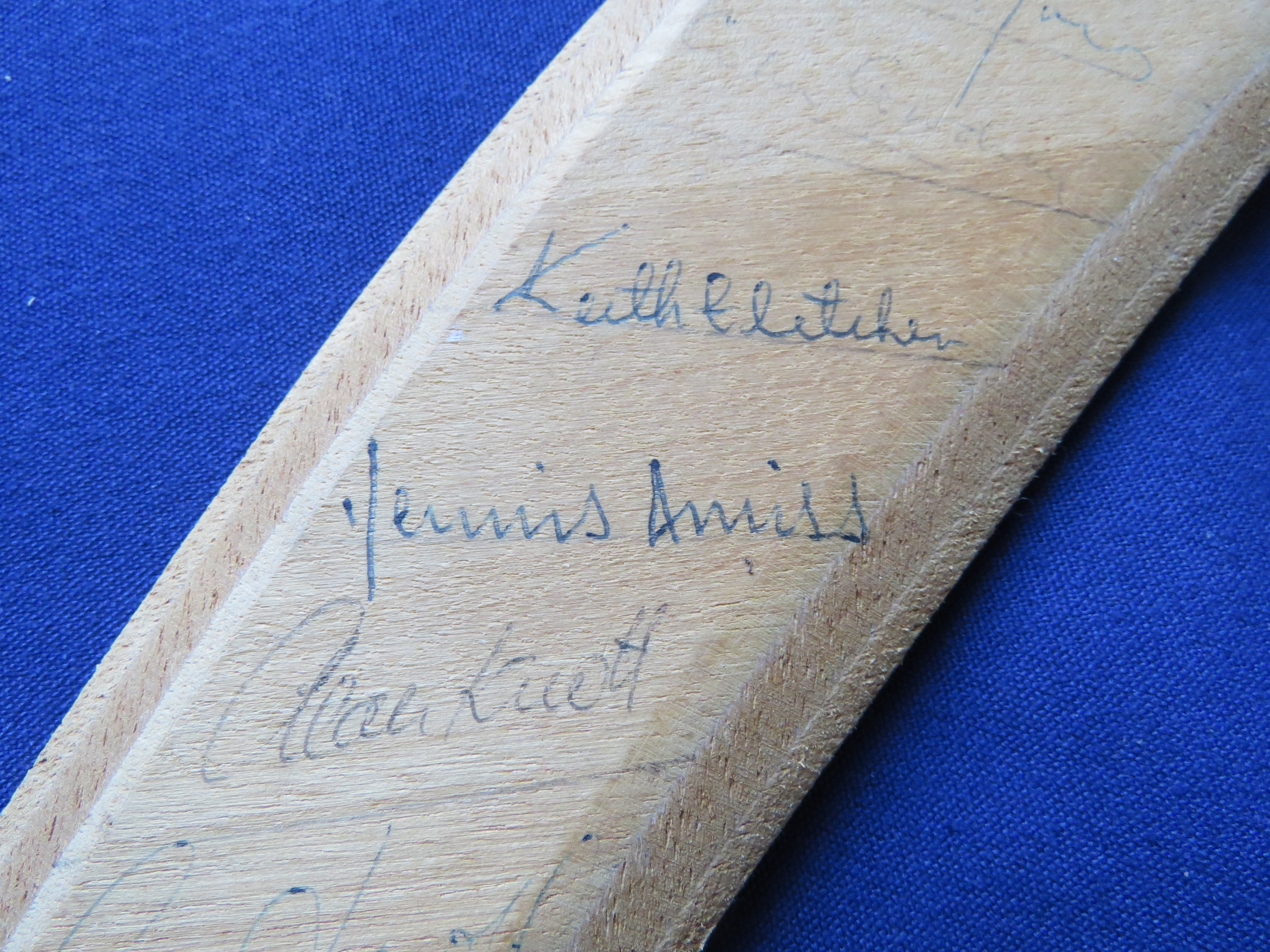
This boomerang has rather more connection with the club, even though it is hardly an obvious cricketing trophy. It has been signed by Alan Knott and Derek Underwood, among many other England cricketers, and was donated to the club by our President in 1984, Utrick Henry Burton Alexander, known to all as Sandy. Mr. Alexander, a solicitor by profession, was born in China and may well have been the club’s longest-lived President when he died in 2014, aged 97. I’m sure Derek Carlaw or Howard Milton will correct me if I am wrong. Quite why the England players signed this boomerang, and how it came into Sandy Alexander’s possession is rather more vague, but as it’s got the signatures of Deadly and Knotty, it stays in the collection.
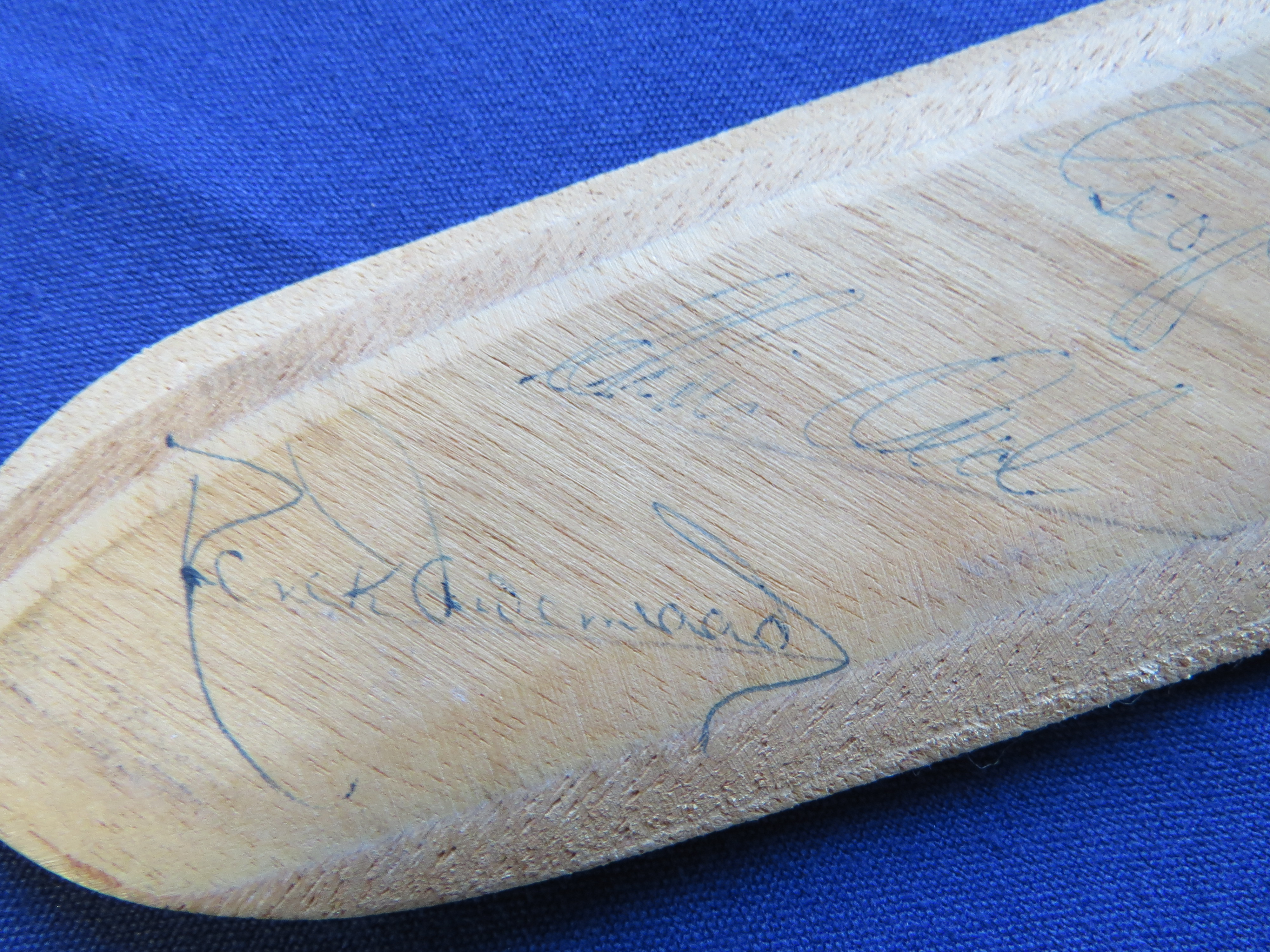
More important, and more obviously a significant part of any collection attempting to chronicle the history of cricket in our county, is the original poster advertising the “Grand Match” between Kent and All England, held on Tuesday and Wednesday, 10th and 11th August 1841. The match was played at the Beverley Cricket Ground, “adjoining the Cavalry Barracks, Canterbury”, and for a mere six pence (2.5p) you could have watched players of the calibre of two Mynns (spelt Mynne here), Wenman, Pilch and Hillyer (here spelt Hillier) for Kent, and Ponsonby, Lillywhite, Box and Cobbett playing for All England. All England also fielded Good and Guy, but were nevertheless not the good guys as far as Kent’s vociferous supporters were concerned.
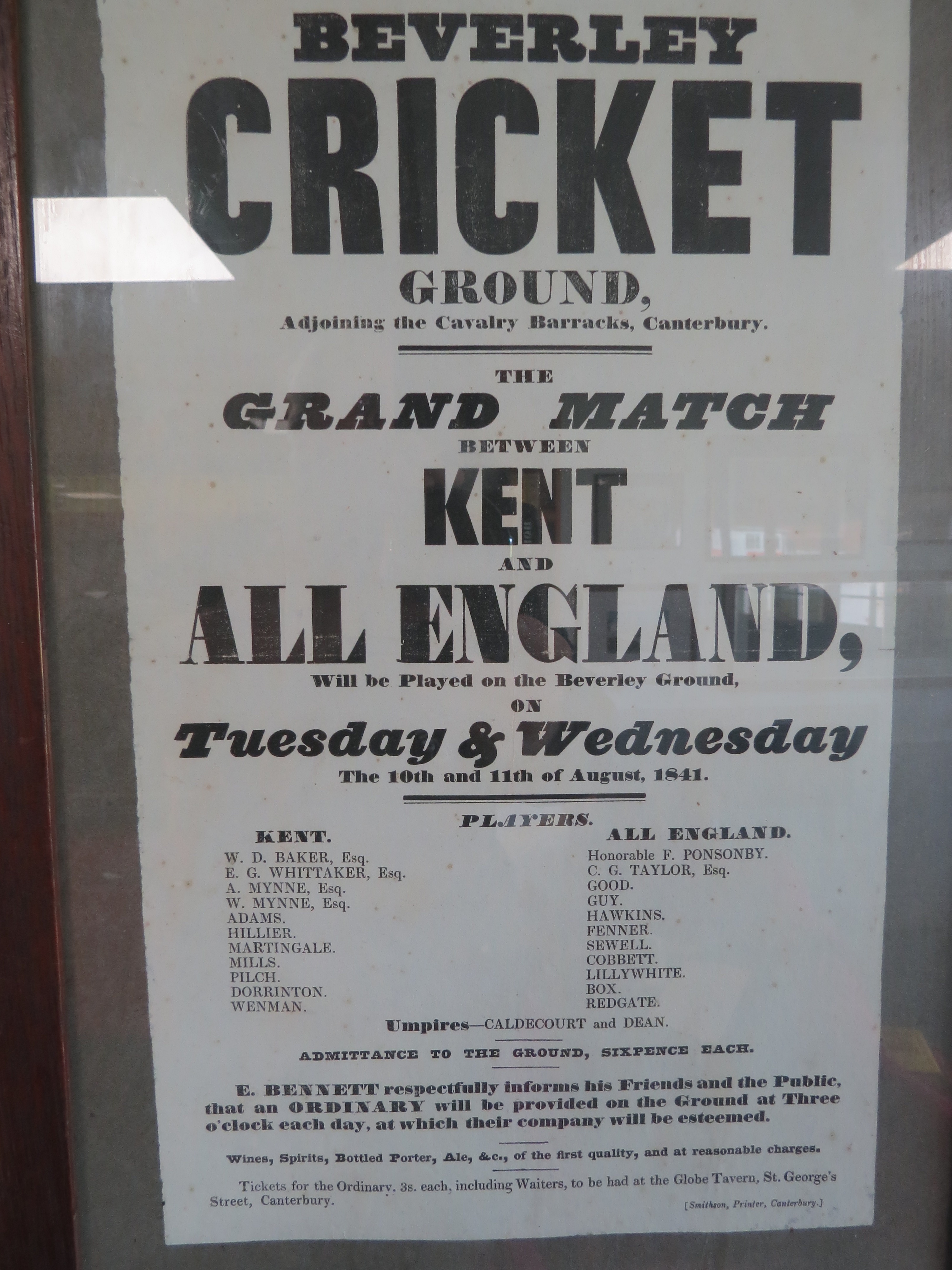
This match predates the founding of any club that claimed to represent the whole county of Kent, and it was to be another 29 years before the present Kent County Cricket Club was formed. Alfred Mynn and Fuller Pilch are two of the great names of the early years of cricket in England, Mynn the great all-rounder and Pilch the greatest of all batsmen before W.G. came along. Hillyer was a very fine bowler and Wenman the wicket-keeper, perhaps the first in the long line of great Kentish keepers.
The poster also advertises the efforts of E. Bennett to keep the spectators well fed and watered. For a mere three shillings (which was actually quite a lot of money for the common man in those days), spectators could partake of the “ordinary”, provided by Mr. Bennett and his staff at three o’clock – a full meal washed down with plenty of “wines, spirits, bottled porter, ale and co.” Mr. Bennett’s efforts were certainly well rewarded – over 4,000 people attended the match over the two days, and such was the interest in the game that the Beverley club organised a complete week of matches for the next year, the first ever Canterbury Week. That proved so successful that by the end of the week, the first Kent county cricket club was formed, based at Canterbury and built on the brilliance of the Kent eleven, which was undoubtedly the strongest in the country at the time.
By the start of the 2018 season, we hope to have all these items sorted, catalogued and stored safely, with the exception of a few which will go on display around the ground. We always need volunteers to help us with our work, so please get in touch if you feel you want to be part of the Heritage Trust.
Happy Christmas, and a prosperous 2018 to all.
0 Comments